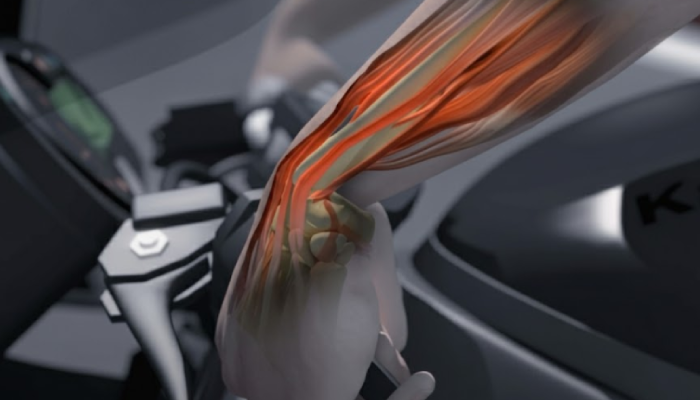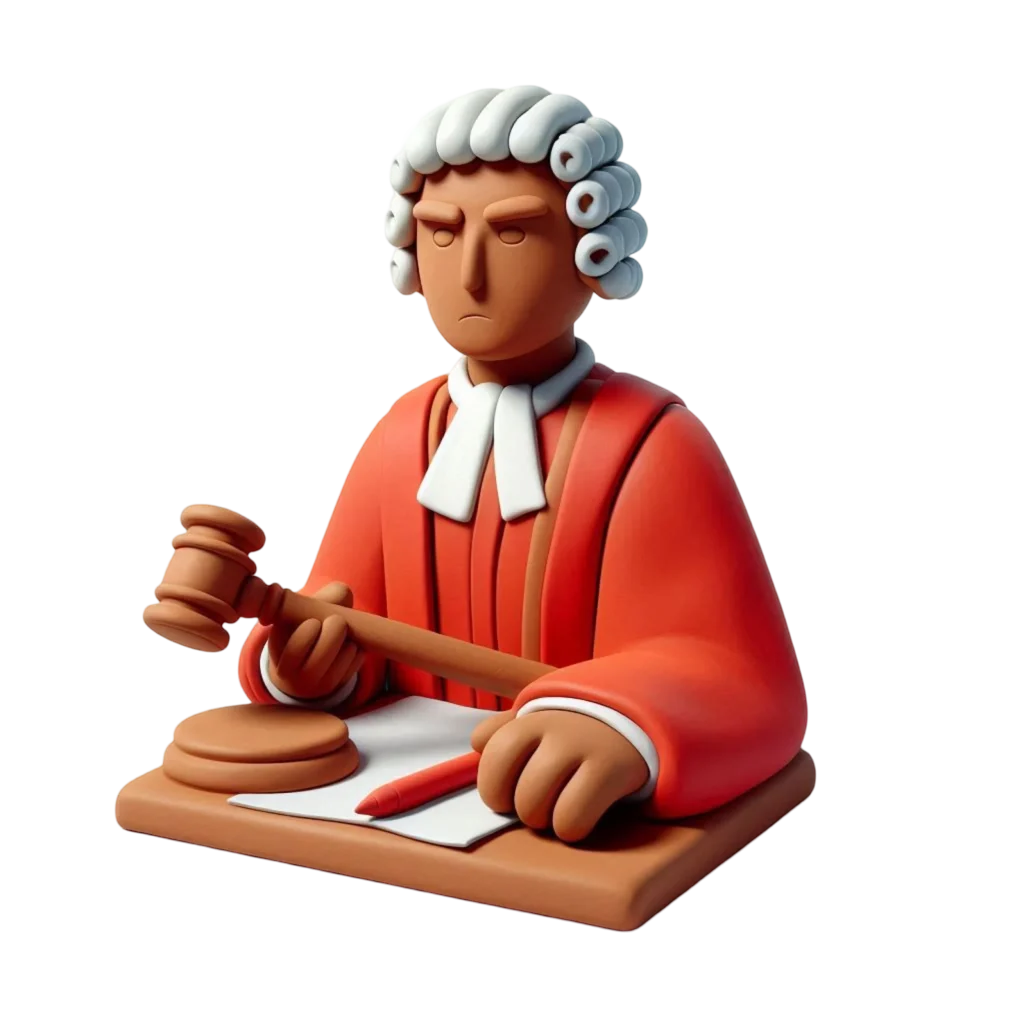When preparing your case presentation, it’s essential to think about your audience. You may know every detail of your case inside and out, but the mediator or jury often starts with no context about your client or the events that took place.
That’s why attorneys frequently turn to visual litigation aids, such as demonstrative evidence, to clarify complex details, enhance storytelling, and build credibility in front of a jury. But which type of demonstrative exhibit is most effective for your case?
To help you decide, we’ve outlined seven of the most impactful demonstrative evidence examples that can make your arguments clearer, more persuasive, and more memorable.
Let’s begin with one of the most common and effective tools: medical visuals.
1. Medical Animations, Diagrams, and Graphics
Whether you represent the plaintiff or the defense, medical diagrams and animations can be game-changing in your case presentation. These visuals translate complex medical data such as surgical procedures, injuries, or internal mechanisms into clear, easy-to-grasp storytelling elements for jurors and mediators.
For instance, one attorney who used professional medical illustration services successfully obtained a $5.8 million verdict. That’s the power of helping the jury see the injury instead of just hearing about it.
High-quality visuals from Legal Animation can also be adapted for multiple stages of litigation from mediation to trial. They serve as compelling pieces of demonstrative evidence during opening statements, expert testimony, and closing arguments. Plus, they can be updated or refined as your case evolves.
2. Right-Way, Wrong-Way Animations
One of the most persuasive techniques in litigation is showing the jury what could have happened or how things should have happened compared to what actually occurred.
These right-way, wrong-way animations are especially powerful in cases involving car accidents, construction incidents, or product failures. They allow the jury to visually compare both versions of events, making it easier to determine responsibility and negligence.
For example, in a recent collision case, a Legal Animation team developed a “ghost” animation to demonstrate the actions of a speeding motorcyclist who crashed into a truck. The animation showed a side-by-side comparison one version following the driver’s actual speed, and another depicting what would have happened if he had followed the speed limit. The visual made it instantly clear that the crash could have been avoided, strengthening the defense’s position and influencing the jury’s understanding of liability.
3. Mechanism of Injury Visuals
In cases involving personal injury, mechanisms of injury animations play a vital role in presenting a clear and compelling narrative. These visuals help illustrate how an injury occurred, making complex medical details easier for a jury or mediator to understand.
While this type of demonstrative evidence is often used by plaintiff attorneys to validate claims, defense attorneys can also leverage these visuals to challenge or disprove the opposing side’s version of events.
A medical animation provides a strategic storytelling advantage bringing credibility and clarity to your expert witness testimony. When paired with strong medical opinions and factual data, these visuals can often persuade opposing counsel to reconsider their stance during mediation, potentially saving valuable time and the high costs associated with going to trial.
4. Product Failure Animations
Explaining the mechanics behind a product failure can be challenging, especially when technical details or multiple components are involved. Product failure animations transform these complexities into a concise, visual story that’s easy to grasp.
This type of demonstrative visual can effectively showcase:
- The defective components and their functions
- The design or manufacturing process leading up to the failure
- The chain reaction of malfunctions, damages, or external factors involved
Attorneys have found that using litigation video services to create short, clear animations sometimes under a minute long can powerfully convey the cause and effect of a product failure. Such compelling visuals often lead to faster settlements and stronger negotiation leverage.
5. Unbiased Forensic Animations
Maintaining neutrality in forensic animations is essential when emotions or opinions might cloud judgment. A professional litigation animation studio, like Legal Animation, ensures that all visuals remain factual and balanced avoiding unnecessary dramatization or speculative imagery.
For example, visuals that exaggerate injuries with excessive detail or depict unverified events can unintentionally bias a jury. Instead, unbiased forensic visuals focus on verified data, physical evidence, and expert analysis presenting the facts clearly and persuasively.
These animations can also help clarify complex witness testimony or conflicting expert opinions, promoting transparency and fairness in the legal process. By removing emotional influence and focusing solely on the facts, Legal Animation empowers attorneys to present stronger, more credible arguments.
6. Motor Vehicle Collision Animations
One of the most compelling types of demonstrative evidence is motor vehicle collision animation. According to the National Highway Traffic Safety Administration (NHTSA), more than 42,900 people lost their lives in vehicle crashes across the United States in 2021. As daily commuting continues to rise, civil cases related to traffic accidents have also increased significantly.
To illustrate the impact of this visual tool, consider the Jenner car crash of 2015 a case that gained widespread attention after a detailed crash animation was released online. These realistic recreations help attorneys present complex accident scenarios with unmatched clarity.
In fact, one attorney reportedly secured a $1 million settlement, achieving over 20 times return on investment, thanks to a powerful car crash animation that reshaped the narrative of his case. This shows how Legal Animation’s vehicle crash reconstructions have become an indispensable resource for attorneys nationwide.
Fun fact: While most people associate accident recreations with car or pedestrian collisions, aviation accident animations are also becoming increasingly popular among civil and defense attorneys for presenting complex cases involving aircraft incidents.
7. Video Analysis Graphics
Sometimes, surveillance footage can be the key to unlocking the truth behind a case. But let’s face it most videos captured by public cameras, dash cams, or mobile devices suffer from poor quality, distance, or distortion. That’s where video analysis graphics step in.
If you’re uncertain about the admissibility of demonstrative evidence, you can explore related resources such as “5 Questions About Legal Admissibility for Visuals, Answered.”
With Legal Animation’s video analysis services, even low-quality footage can be transformed into a powerful visual narrative. By applying camera matching, laser scanning, and pixel-by-pixel data analysis, attorneys can highlight critical moments that might otherwise go unnoticed.
This form of demonstrative evidence bridges the gap between technical data and jury understanding, helping legal teams turn vague footage into a clear, persuasive story that resonates in the courtroom.
Which Demonstrative Evidence Examples Best Strengthen Your Case?
No matter what type of civil case you’re handling or preparing to file demonstrative evidence can make all the difference. When you pair strong legal arguments with powerful visuals, you help the jury and judge see the story behind the facts.
Below are seven impactful types of demonstrative exhibits that could transform how your case is understood at any stage of litigation:
- Medical Animations, Diagrams, and Graphics
Clearly explain complex medical procedures, injuries, or anatomy with visuals that simplify the science and engage the viewer. - Right-Way vs. Wrong-Way Animations
Show how an incident should have occurred versus how it actually happened to highlight negligence or error. - Mechanism of Injury Visuals
Illustrate how an injury took place step by step to make your client’s pain and experience undeniable. - Product Failure Animations
Demonstrate how a product defect or malfunction directly caused harm or damage, leaving no room for confusion. - Unbiased Forensic Animations
Provide objective, fact-based reconstructions rooted in expert data to clarify complex evidence without bias. - Motor Vehicle Collision Animations
Recreate accident scenes with precision to visualize trajectories, impacts, and fault in a compelling and factual way. - Video Analysis Graphics
Enhance or annotate real surveillance or dashcam footage to highlight critical movements, actions, or timelines.
Are you ready to secure a stronger verdict or favorable settlement for your client?
Discover how Legal Animation can help you leverage demonstrative evidence to make your case more persuasive, credible, and unforgettable.


